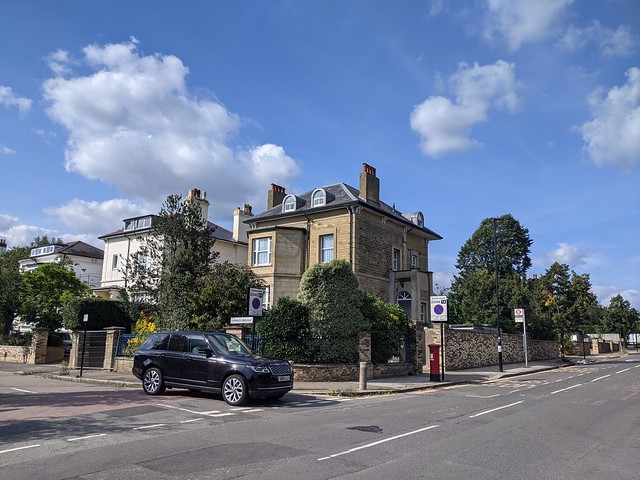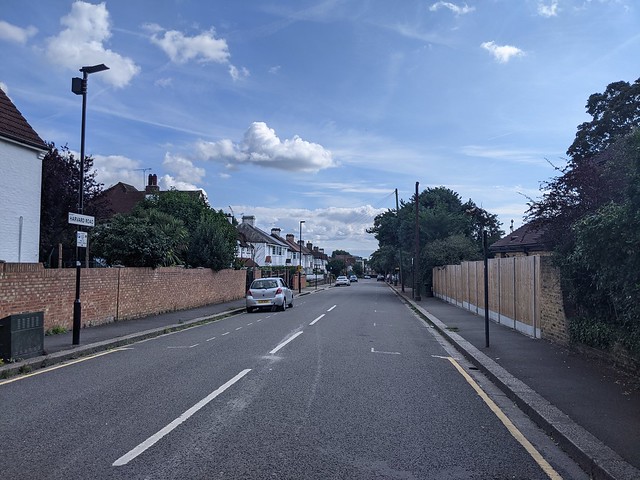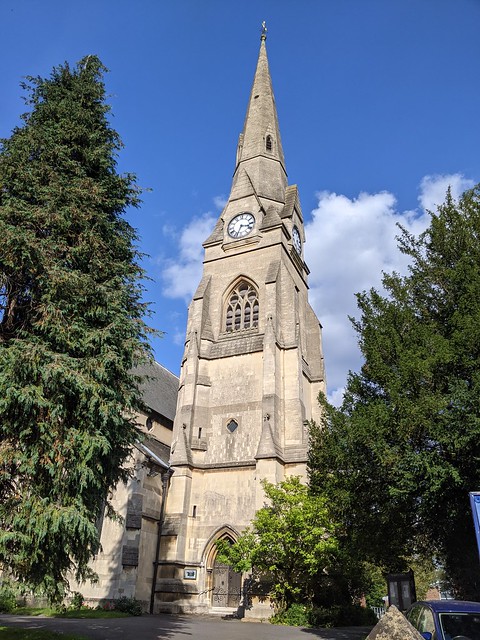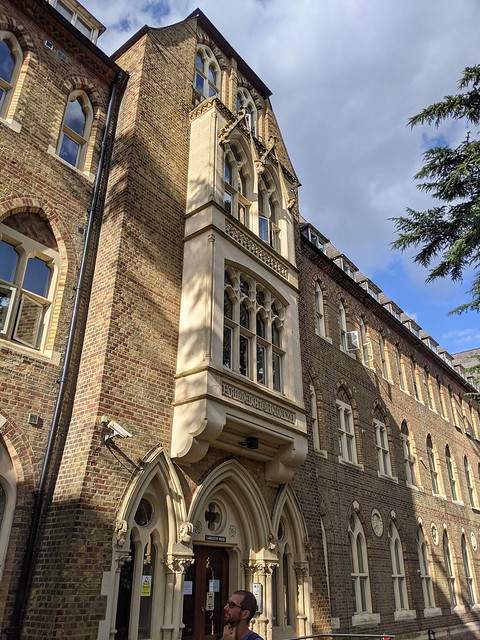Saturday 11th September
For my last Open House London 2021 excursion I booked a place on the Hounslow Historians led guided tour of Spring Grove in Isleworth. This sounded like an interesting thing to do and is in an area not far from where I was born, so a personal connection too. The walk around a few streets north of Isleworth railway station, with the advantage of a guide to point out the salient features and history of the buildings turned out to be every bit as good as I’d hoped. Scheduled from 1430 to 1600hrs time flew and it over ran which surely is the sign of a good guided tour? As I suspect is the fact that I took relatively few photos.
Largely rural until the early 20th century grand villas were developed during the 1860s by the 1930s it had largely taken on its present form
Once known as Smallberry Green, now the area takes its name from Spring Grove House one time home to Sir Joseph Banks. The vision of subsequent owner Henry Daniel Davies was for a grand Victorian suburb within some 300 acres of land. Examples of these Italianate influenced villas designed by John Taylor Jnr survive. Davies later lived in the largest of the houses he conceived called Thornbury, now Campion House derived from ownership by the Society of Jesus 1911-2005. Today this grand stuccoed mansion is bordered by a public open space.
Listed Spring Grove House was described in 1840 as a "fine square building of brick covered with Roman cement, terrace along the south front and walks leading to extensive lawns and a lake". It was enlarged and altered during later ownership by Andrew Pears great grandson of the inventor of Pears' transparent soap. The music room and winter garden are considered fine examples of late 19thC rooms.
Among newer additions to the area is a swathe of quirky arts and crafts semi-detached rough cast and tile hung properties. While the Crown Court's 1990s extension is an add-on to former ward blocks of a hostel built 1948as a home for paraplegics.
Because of ongoing building works Spring Grove House - now part of West Thames College - was out of bounds and so had to be viewed from the perimeter fence of its grounds but here’s a view of the finely decorated gate lodge.
From the web site of the Spring Grove Residents’ Association
The house was leased in 1780 to the eminent botanist and explorer Sir Joseph Banks after his voyage to the South Pacific on The Endeavour with Captain James Cook. In 1791 he also rented land around the house and purchased the house and estate in 1808.
The house and estate changed hands several times until it was purchased by Henry Daniel Davies in 1850. Davies was a property developer and laid out plans for an impressive estate of roads and large houses surrounding Spring Grove House. He built St. Mary’s Church and a number of large houses on Osterley Road, Thornbury Road, The Grove and Eversley Crescent.
One of Davies' houses that still stands on The Grove.
Information from the “History of Spring Grove” by Gillian Morris.
Spring Grove was one of the most ambitious middle-class projects, and is said to have been chiefly designed for retired army officers. It was laid out in the early 1850’s, a church was built in 1856, and in the same year the rapid rise of the district was noted as a remarkable result of the new railway system.
Spring Grove was one of the most ambitious middle-class projects, and is said to have been chiefly designed for retired army officers. It was laid out in the early 1850’s, a church was built in 1856, and in the same year the rapid rise of the district was noted as a remarkable result of the new railway system.
Another of Davies’ houses, in Thornbury Road.
The good beginning was soon over: by 1865 only a few villas, including Thornbury House (now Campion House), where H. D. Davies, the promoter of the estate, lived, stood in their gardens along the roads round the church, though there was a rather larger number in the Grove.
Campion House, formerly Thornbury House, in Thornbury Road. (Although the tour did not reach further north than Campion House a little way beyond at 126 Thornbury Road my parents rented their first flat after they married.)
Very few houses of the original type were added to the estate later and though a number of retired soldiers seem to have lived there at first, the failure of the project was implicitly acknowledged in 1888.
Later, smaller houses in Harvard Road, some in Arts & Crafts style.
St. Mary’s Church, Osterley Road. Part of the reason the tour over ran was that the Church Warden turned up while we were outside and invited the tour group to come in and have a nose around.
So we did.
Close by, the International College (opened in 1867) represented another plan which never fulfilled the original hopes: the building, which was in the Gothic style, was taken over in 1890 by the Borough Road Training College.
Taken from SGRA Newsletter of November 2009, sourced from: “Heston and Isleworth: Introduction”, A History of the County of Middlesex: Volume 3: Shepperton, Staines, Stanwell, Sunbury, Teddington, Heston and Isleworth, Twickenham, Cowley, Cranford, West Drayton, Greenford, Hanwell, Harefield and Harlington (1962), pp. 85-94. URL: http://www.british-history.ac.uk/report.aspx?compid=22270&strquery=london%20apprentice%20isleworth
The former International College, later Borough Road Training College, and now (of course) converted into flats.
The above is only a flavour of the buildings and history covered by the tour. Such was the attention I was paying to the guide, who was very good and encouraged participation by anyone who had anything to add or who wanted to know more, that I failed to photograph the Isleworth & Syon School or the Crown Court. What photos I did take are here.
I might have to go back and explore this area some more when time allows.








No comments:
Post a Comment